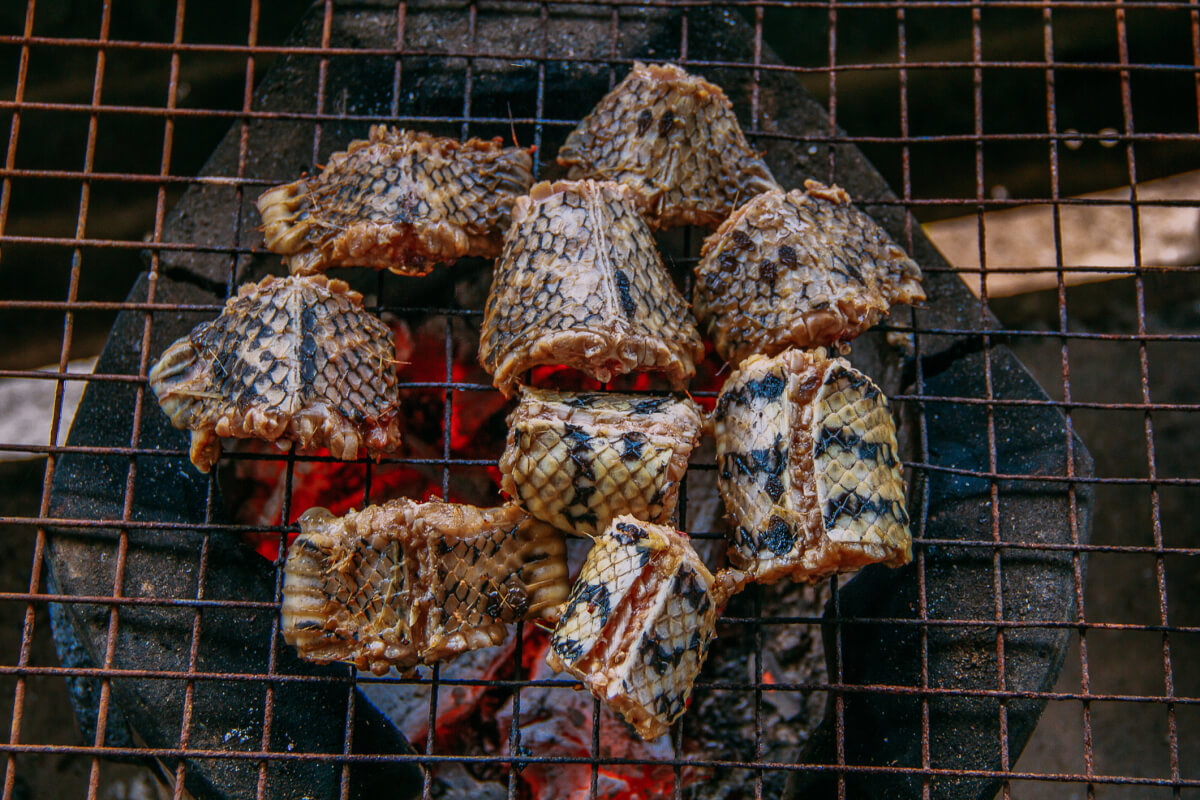When you’re out in the wild and in a survival situation, you will need all the calories you can get, whether from foraging or, better yet, hunting. One of the many sources of precious calories is snakes. If you’re in an arid, forested, tropical or sub-tropical area, you will likely be able to find a snake if you take the time. There are even marine snakes you may encounter, should you be on a remote island.
Which Snake to Eat?
Deciding which snake to eat is not a matter of preference when your survival is at stake. There are poisonous and non-poisonous snakes, and the degree of caution you should take with either type is the same –extreme. Even a non-poisonous snake can carry diseases and its bite can be potentially lethal if it gets infected. It isn’t always true that the poisonous ones make a warning noise, are the most colorful or expand their hood like the Cobra.
To be safe, treat all snakes as dangerous.

Finding Snakes
Different types of snakes are active at different times of the day; many are nocturnal. When looking for one, remember they are cold-blooded and their activity is dictated by outside temperatures. They can’t stay under the sun if it’s too hot, and they tend to go into hibernation if it’s too cold.
Try to find snakes in these places:
– Under piles of rocks or logs
– In hollow knots of trees
– Tall grass
– Old rodent dens
When checking for snakes, make sure to probe around the area with a stick; NEVER use your hands, arms or feet while looking for one!
Catching and Killing Snakes
Before you go snake hunting, be sure to have a long stick with a Y-shape on one end. If a snake has sensed you it will always assume you are threatening it and it will defend itself. Once it shows signs of aggression (like sounding its rattle, rearing up, etc.) it’s ready to strike, so keep your distance.
Cautiously make your way behind it, then use the Y-shape of your stick to pin its head to the ground. Keep the head pinned, then chop off the head about an inch from the end with your knife or machete. Never go near or poke the severed head with your hand; they’ve been known to still have a bite reflex for up to an hour after death! Carefully bury the head in a hole (at least a foot deep) and take the rest of the snake back to your basecamp.


Preparing the Snake for Cooking
Now that you have your hard-won prize, prepare your cooking fire. Then perform these steps:
- On a flat, clean working surface, cut open the snake from where the head used to be, all along its length.
- Carefully skin the snake, cutting all connective tissue. Yank the skin off the flesh and save the skin if you like.
- Next, gut the carcass. The snake’s guts are conveniently in a long tube along its body, so pull it all out.
- With some water, rinse out the gutted carcass to remove any blood.
- Cut the snake into 6-inch pieces and place them on the ends of sticks.
Cooking and Eating
After you’ve prepped the snake, it’s time for cooking. Simply hold the pieces of the snake close to but not directly on the flame. As soon as the meat browns, it’s cooked.

Final Notes
Snake meat is considered a delicacy in many countries, and eating snake is included in the survival manual of most national militaries, so it’s nothing taboo or extraordinary.
When hunting, killing and cooking a snake, remain alert and be cautious at all times. If you’re about to eat a poisonous snake, make sure the meat is well-done to eliminate any residual venom or any parasites it may have.
In a survival situation, snake meat is a solid option to provide you with the calories needed to stay healthy and strong until you are either rescued or make your way back to civilization.


